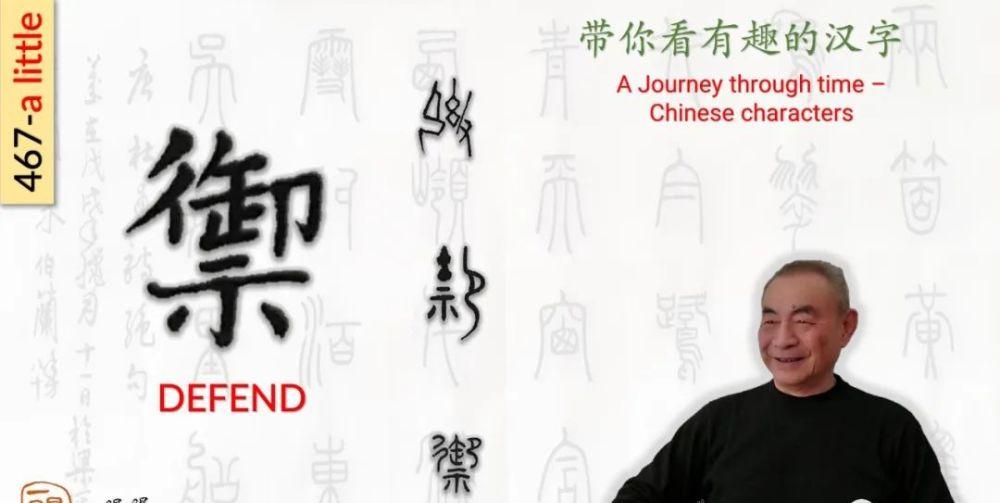The 80-year-old happy old man uses calligraphy
Demonstrate the origin of Chinese characters
Let's talk about the story of Chinese characters with you

Kanji Fun Talk: 禦
"禦" (yu4), which is a synonym character. The oracle bone "禦" character has a variety of different writings, the first and second paragraphs are composed of a bunch of stranded "糸" + a kneeling person, the third paragraph is composed of "show" + a bunch of stranded "糸" (a variant of "糸") + a kneeling person, the fourth paragraph is composed of a kneeling person + a bunch of stranded "糸" + "攴".
For this symbol in the oracle bone like a bunch of twisted "ito", it is believed that it is the "noon" that indicates the umbilical cord. In ancient times, the high birth rate of the population was accompanied by the mortality rate, the infant mortality rate was as high as 50%, in order to ensure the prosperity of the clan and the continuation of the clan survival, increasing the population was a very important event, which gave rise to the "fertility sacrifice", "Yu" is to pray for the reproduction of the population of the fertility sacrifice.
It is believed that the symbol of the oracle bone like a bunch of twisted "ito", that is, the pictogram of a bunch of silk, in the Yin Shang period, the silkworm breeding industry has been very developed, the word "禦" is to pray for a good harvest, to eliminate disasters (there is an infectious disease can make the silkworm body stiff, can not spit silk cocoon), the ancient ancestors of the "silkworm god" sacrifice, sacrifice a bundle of silk as a sacrifice. Archaeology has found that the cultural relics excavated from the Hougangyuan sacrifice pit in the Shang Emperor Yi and Di Xin eras include silk fabrics and silk threads.
The "禦" character of the jinwen continues the golden glyph, and the small seal "禦" configuration deforms the character representing "糸" in the golden glyph, and adds "彳" (indicating the road) in the upper left part, which is related to defense and imperial vehicles. After the change, it is written as "禦", and after the simplification of Chinese characters, it is written as "御".
The original meaning of "禦" is sacrifice. The Shuowen Jiezi explains: "禦, 祀也." It is not a whip to ride a horse.
"禦" is interpreted in many literatures as: resisting, resisting, preventing, etc., these are actually the meanings of the later.
[Note] the difference between taming, mikoto, and 禦. In the sense of control, "taming" and "royal" are connected. "Yu" often refers to the person driving the horse, and "driving" generally refers to the movement of the driving horse. In the sense of resistance, the ancients wrote "御", and later they all wrote "禦". Neither the words "驭" nor "禦" have the meanings of "serving", "offering", or "things related to the emperor".